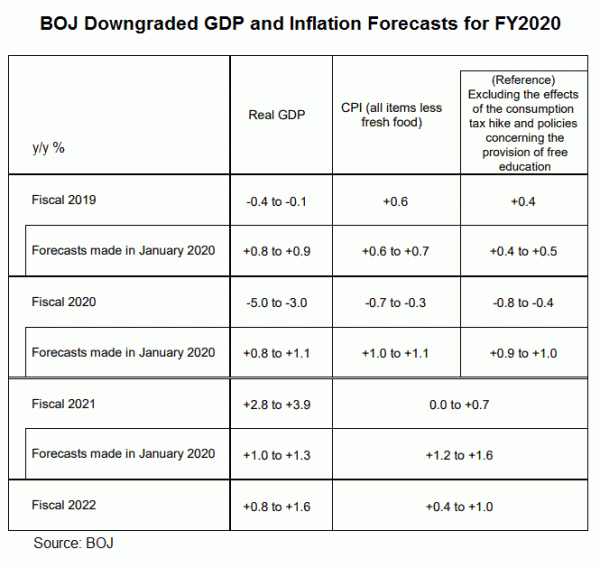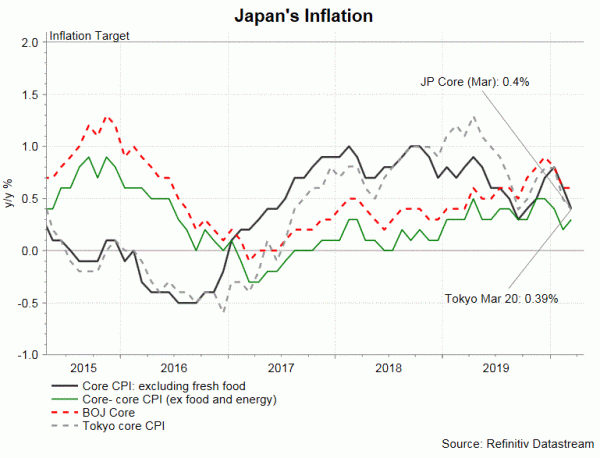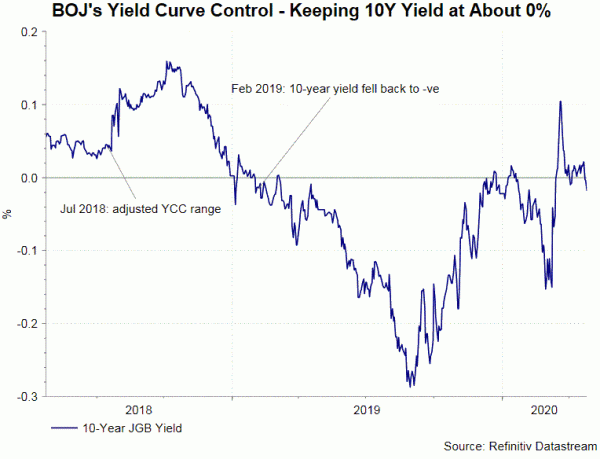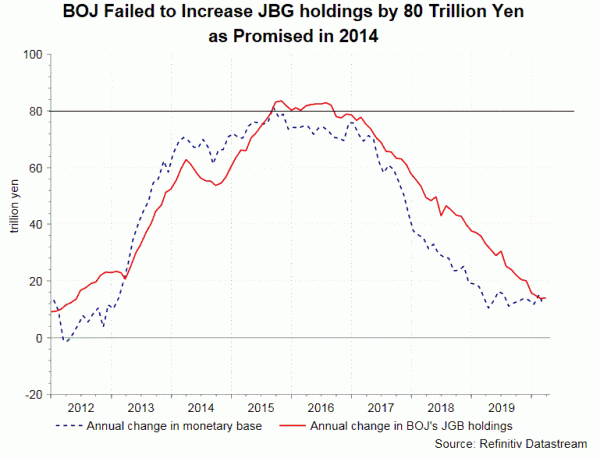BOJ announced to expand QE today. It will increase support on corporate financing and remove the annual purchase limit for JGBs, from 80 trillion yen previously. Meanwhile, the central bank left the overnight rate unchanged at -0.1%, and the yield curve control (YCC) program in order to keep the 10-year JGB yields at about 0%. We expect BOJ’s will increase the size of asset purchase, but only by limited size. Accelerating asset purchase might depress interest rate, possibly sending the 10-year JGB yield to negative. This is a contradiction to the goal of YCC. Meanwhile, profitability of the banking sector will deteriorate, restraining the ability to support corporate.
The central bank will enhance the monetary easing measures in the following areas: (1) an increase in purchases of CP and corporate bonds, (2) strengthening of the
Special Funds-Supplying Operations to Facilitate Financing in Response to the Novel
Coronavirus (COVID-19), and (3) further active purchases of Japanese government bonds (JGBs) and treasury discount bills (T-Bills)
Concerning CP and corporate bonds purchases, BOJ raised the upper limit on additional purchases of CP and corporate bonds to 7.5 trillion yen for each asset class. Since the current purchase guidelines are 2 trillion yen for CP and 3 trillion yen for corporate bonds, the total upper limit for the amount outstanding is increased 20 trillion yen. Moreover, the statement noted that the maximum amounts outstanding of a single issuer’s CP and corporate bonds to be purchased will be raised substantially, and the maximum remaining maturity of corporate bonds to be purchased will be extended to 5 years
BOJ announced something similar to Fed’s QE infinity. As noted in the statement, BOJ will “purchase a necessary amount of JGBs without setting an upper limit so that 10-year JGB yields will remain at around zero percent. While doing so, the yields may move upward and downward to some extent mainly depending on developments in economic activity and prices”. This appears an aggressive move as the upper limit is removed, compared with the existing limit, 80 trillion yen, announced in 2014. However, the target has been missed since 2017. Governor Haruhiko Kuroda admitted in an interview last year that “the 80 trillion yen phrase is a symbol of monetary easing”. The lack of commitment has put BOJ’s credibility at risk.
We contend that BOJ’s QE unlimited will again be symbolic. Indeed, it might be contradictory to the central bank’s another key measure – yield curve control. A large increase in JGB purchases could lead to sharp decline in interest rates, making it difficult for the BOJ to keep the 10-year JGB yield at about 0%. Meanwhile, decline in interest rates could further erode profitability of the banking sector. We expect BOJ will for a short period of time accelerate purchase so at to curb upward pressure on interest rate. This should come together with an increase in issuance of JGBs. Yet, the pace of purchase will be constrained by YCC.
On the economic outlook, BOJ markedly downgraded the real GDP growth and inflation forecasts for FY2020. Recovery will be seen in FY 2021. For the first tiem, BOJ released its projections for FY 2020. Note that inflation is projected to reach a range between 0.4 and 1% in FY2020, indicating the failure to achieve the 2% inflation target in the projection horizon.















